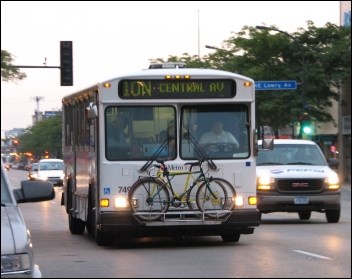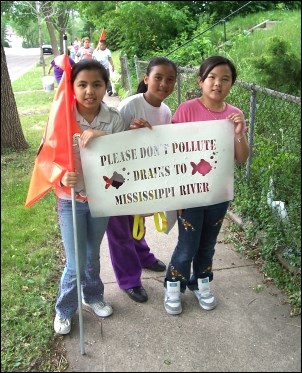
IntroductionBecoming earth friendly does not have to be difficult. There are many ways to reduce your carbon footprint cheaply and without too much effort. Some can even save you money in the long run. Here are a few of the many ways you can help: Adjust your thermostatRaising it a few degrees in the summer and lowering it a few degrees in the winter can make a huge difference in energy use and will save you money. If you have a programmable thermostat, consider setting it so that it uses less energy while you're at work or school. It won't keep your home as warm/cool while you're gone, but you won't be there to feel the difference. Use alternative forms of transportationFewer vehicles on the road means fewer emissions. Take the bus or carpool. Many employers will pay for bus/train passes for the commute to and from work. Bicycling and walking are good alternatives too, especially if you live close to work. And chances are, you'll never have to pay to park your feet. For information about public transit in the Minneapolis/St. Paul area, check out www.metrotransit.org. Buy a fuel efficient or used vehicleFuel efficient vehicles may be expensive, but they'll lower your emissions and save you money at the gas pump (the money you save may even compensate for the higher price of the vehicle). Instead of buying a new car, think about buying used. New vehicle production requires a lot of energy and materials, while used vehicles require none, since they've already been made. In some cases, driving an older vehicle with decent gas mileage emits fewer emissions than producing and driving a new hybrid vehicle for the same distance, and it'll keep a perfectly good used car out of the junkyard. Regardless of the vehicle you buy, try to drive efficiently. Quick acceleration and high speeds are hard on your car, your passengers, and your gas tank. 
RecycleRecycling keeps unnecessary trash out of landfills and provides companies with materials to make new products. Many communities have recycling programs, some of which will pick up recycling at your home. Check with your local waste and recycling facilities about what items they will and will not take, and what services they offer. Consider doing some recycling of your own as well. Donate old clothes, furniture, and appliances to thrift stores, or have a garage sale (you might make some money!). Use empty food containers for flower pots and item storage, or use your old clothes to make quilts. The possibilities are endless. Buy localBuying organic is often a good choice, but consider how far that organic pineapple had to travel to get to you. Buying locally (organic or not) reduces the distance food has to travel to get to you, therefore reducing the amount of fossil fuels used during shipping. And you never know, you might discover your area has a lot to offer! Remember that strict guidelines must be met to produce certified organic products. Many small farms practice farming techniques that are very earth-friendly, but do not quite meet the requirements to call their products organic. Talk to your local farmers about their practices, and see what they do to help the earth. Eat a climate friendly dietEating less processed and more plant-based foods can do a lot to lower your carbon footprint. Animal-based foods (including meat, milk, etc.) require far more energy and resources to grow than plant-based foods. You don't need to cut out all animal products, but lowering your intake will be beneficial. Buy smartTry to purchase energy efficient appliances (look for the Energy Star® logo). They'll help keep your emissions and energy bill low. Investing in good quality, reusable items may save you money in the long run, and keep unnecessary trash out of landfills. Even if you can't buy reusable, buy recycled. Recycled items can use up to 95% less energy to produce than non-recycled products. Look for items with less packaging as well, or buy in bulk. This will save you money and will save companies packaging materials. 
Plant treesTrees not only provide shade on a hot summer day; they also sequester carbon and provide shelter to many animals. Native trees are always a good choice, and some bear edible fruit and nuts. Spread the wordTalk to people about what you're doing to help the earth. They may be inspired to do the same. Get involvedVolunteer! Many nature reserves and national parks have volunteer programs that help the public get involved with projects and studies that involve climate change. You'll learn more about your local environment and you may help make a noticeable difference in your area. If you have children, help them get involved too. Many children enjoy hands on activities, and they'll learn how easy and fun it is to help the environment. |
Last updated: January 1, 2018
